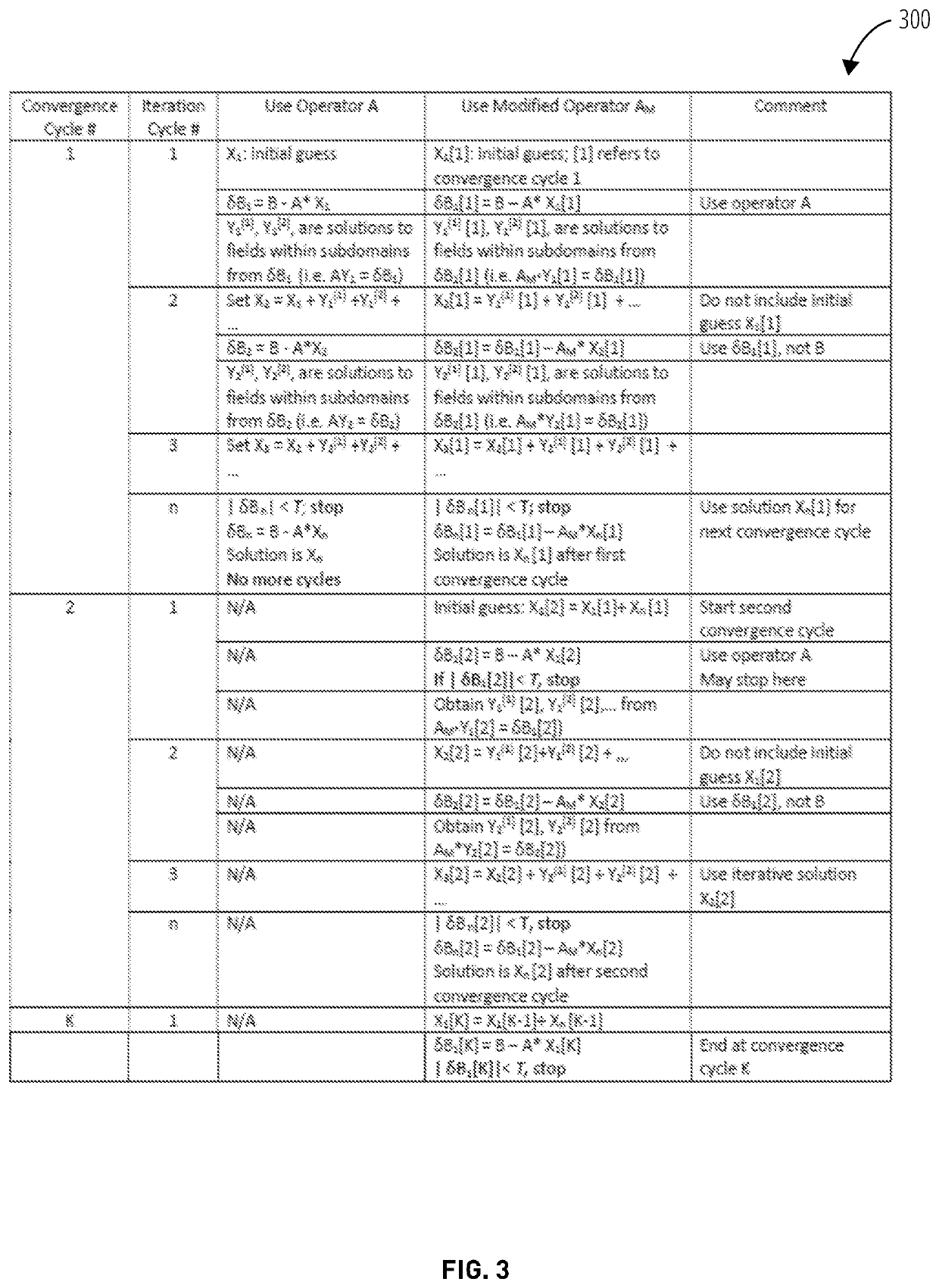Void space domain decomposition for simulation of physical processes
a virtual space and domain decomposition technology, applied in the field of mathematical modeling or simulation of physical objects, can solve the problems of limiting the size of the domain that can be used and the speed with which computation can proceed, limiting the number of variables that can be used, and unable to solve large matrix equations. solve the problem of finite difference or finite element value, and the problem of reducing the number of variables,
- Summary
- Abstract
- Description
- Claims
- Application Information
AI Technical Summary
Benefits of technology
Problems solved by technology
Method used
Image
Examples
Embodiment Construction
[0046]The subject matter is described, however, the description itself is not intended to limit the scope of the method. The subject matter thus, might also be embodied in other ways, to include different steps or combinations of steps similar to the ones described herein, in conjunction with other technologies. Moreover, although the term “step” may be used herein to describe different elements of methods employed, the term should not be interpreted as implying any particular order among or between various steps herein disclosed unless otherwise expressly limited by the description to a particular order.
[0047]The Void Space Domain Decomposition (hereafter referred to as “VSDD”) method divides up a domain of interest (in two dimensions or three dimensions) for the purpose of finding a solution for a model problem or simulation in science or engineering.
[0048]The VSDD method can be applied to a number of different equations that describe physical processes, even though the variables ...
PUM
 Login to View More
Login to View More Abstract
Description
Claims
Application Information
 Login to View More
Login to View More - R&D
- Intellectual Property
- Life Sciences
- Materials
- Tech Scout
- Unparalleled Data Quality
- Higher Quality Content
- 60% Fewer Hallucinations
Browse by: Latest US Patents, China's latest patents, Technical Efficacy Thesaurus, Application Domain, Technology Topic, Popular Technical Reports.
© 2025 PatSnap. All rights reserved.Legal|Privacy policy|Modern Slavery Act Transparency Statement|Sitemap|About US| Contact US: help@patsnap.com



